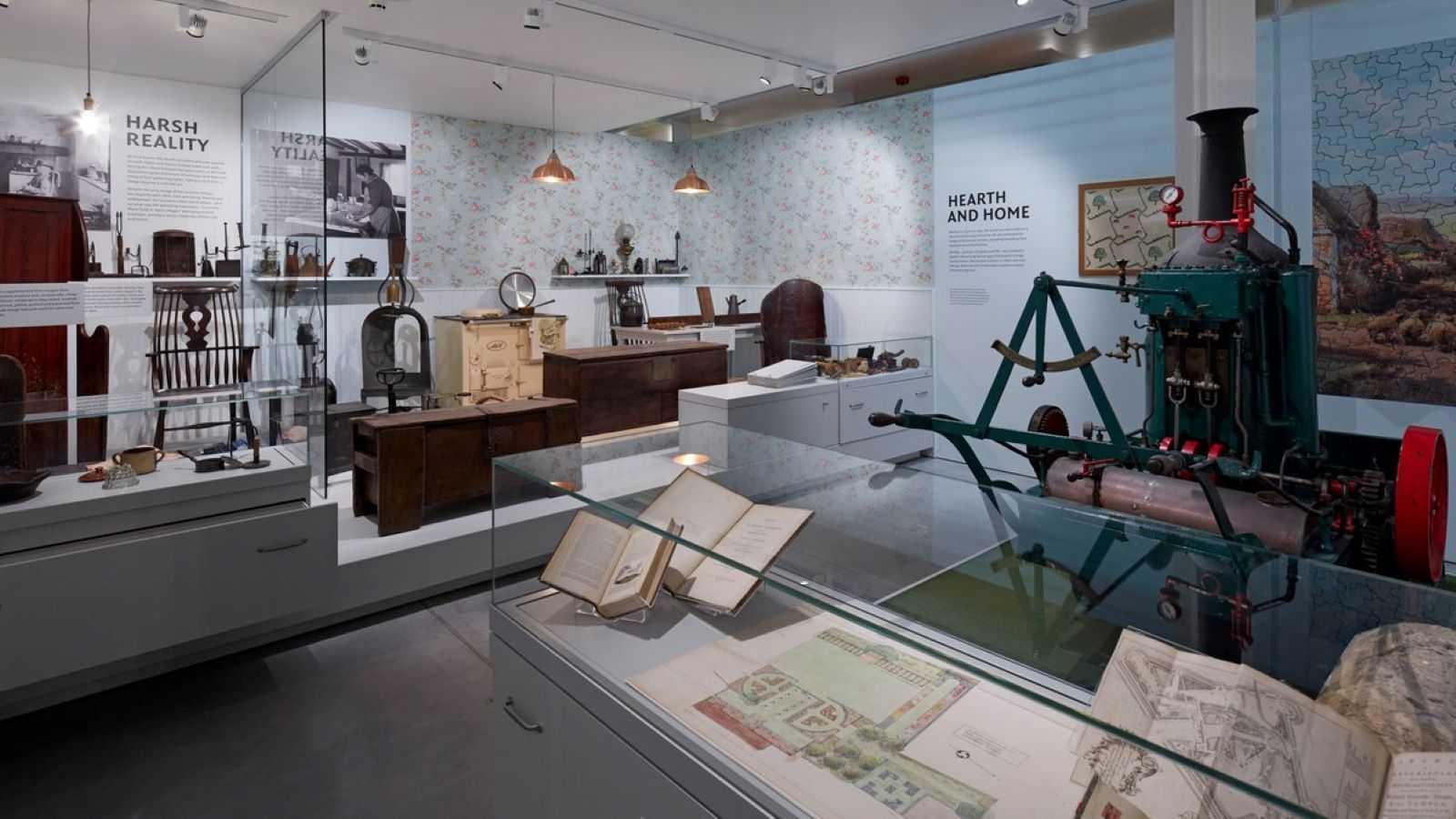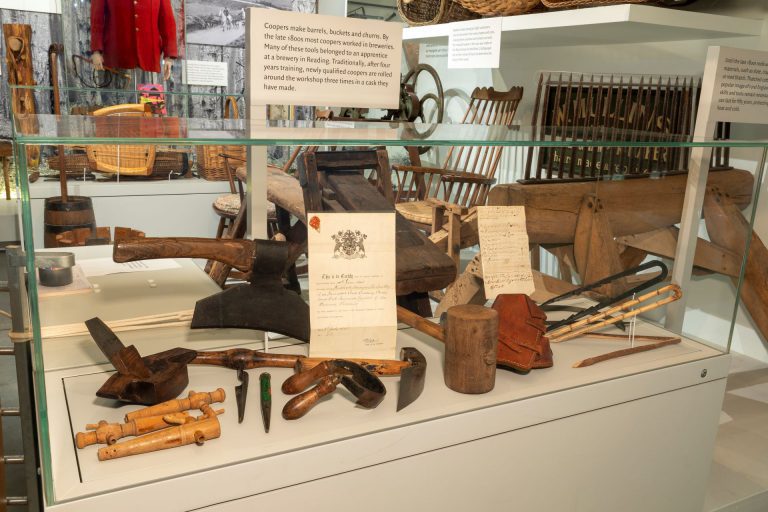Digital labels – Making Rural England

Reminiscent of daily rural life, this gallery showcases rural culture through crafts, living spaces, hunting and more. The diversity of countryside people throughout history is encapsulated by these displays.
To find out more about an object, click the icon hovering above it.
